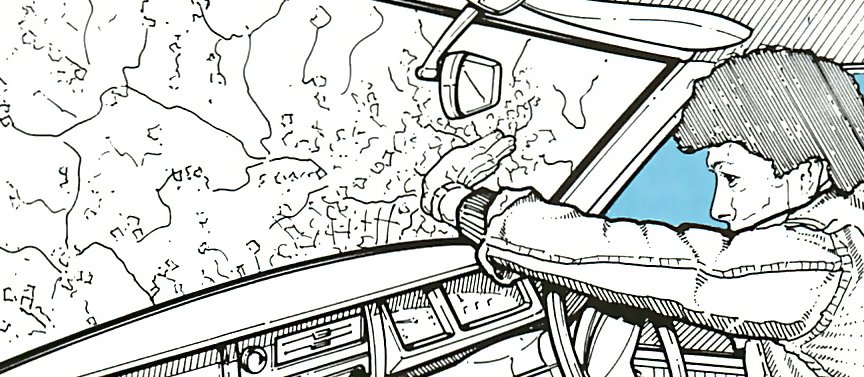It can be an unnerving experience when a windscreen shatters, and the danger of a subsequent accident is very real. Many otherwise inexplicable fatal accidents may well be due to incorrect driver response following the windscreen breaking.
Emergency procedure
If the windscreen shatters, don't panic. If you can still see through it, pull over and stop gently when it is safe. If you can't see, push through the screen with the flt of your hand first.
Cover any vents and protect the bonnet, then push the rest of the windscreen out of the car.
Break off any remaining chunks of glass. Wrap up all the broken glass and dispose of it later.
Types of screen
This video course is the best way to learn everything about cars.
Three hours of instruction available right now, and many more hours in production.
- 4K HD with full subtitles
- Complete disassembly of a sports car
There are two types of safety glass used in the manufacture of windscreens - laminated and toughened. Laminated glass is, as the name implies, two thin sheets of glass separated by a transparent plastic sheet - a lamina. This lamina prevents shards of glass flying into the car in the event of an accident.
When struck by a flying stone the most common cause of windscreen breakage - a laminated screen does not shatter, it usually simply 'stars' at the point of contact. If small cracks run from this point, they may spread when the screen is in direct sunlight.
The second type of glass, toughened, is made using a special heat-treatment technique which puts the glass under stress so that when struck, it crazes into thousands of small granular shapes. The resulting 'crystals' are far less likely to cause injury than the sharp splinters that result when ordinary glass breaks. However, the screen is left virtually opaque, especially at night; to overcome this, manufacturers now make the glass so that the zone directly in front of the driver fractures into larger crystals, through which some view of the road can be maintained.
Most new cars have a laminated screen, but budget-priced models may still have toughened glass windscreens. To discover which your car has, check the specification, or ask the dealer or manufacturer.
Toughened screens
Toughened glass is made by heat treating and selectively cooling the raw glass so that the inner and outer skins of the screen are pre-stressed more than the centre of the section.
Later toughened screens have a different shatter pattern in front of the driver to allow some vision when the glass is broken.
Laminated glass
Laminated glass is just that—laminations (layers) of glass and plastic. These screens are made by placing two thin skins of glass either side of an inner clear plastic sheet. The result is that even if the glass does break, the plastic sheet holds it together and helps to minimize injury by preventing sharp edges from standing proud of the surface.
If a windscreen is laminated, it normally carries a label to say so.
How to react
A windscreen can shatter with quite a bang, which adds to the shock of the situation. The first thing to remember is not to panic and hit the brakes hard. If braked severely, the car may well pull to one side or the other, and with no clear forward vision, this alone could result in an accident.
By taking your foot off the accelerator and gently braking you might be able to see well enough to pull up more slowly but in safety and without drama. If you cannot see well enough you will have to make a hole in the shattered glass. Hit the screen with the heel of your hand, holding the fingers outstretched. This ensures that the hole you produce will be big enough to see through, and reduces the risk of injury to your hand.
Once you have stopped the car and parked it safely off the road, it
is best not to drive on because your forward vision is impaired. You are also sitting behind a frame full of broken glass that could easily fall in and cause injury.
Driving on
If it is essential to drive on, you will have to remove the screen. First block off the demister vents with a cloth or crumpled newspaper. Then place sheets of newspaper inside the car as well as on the bonnet to catch the remains of the glass. Knock the screen outwards using a protected hand, or an available implement.
If it is not essential that you continue your journey immediately, find the nearest telephone and ring a windscreen replacement service, or the nearest garage. In most comprehensive motor insurance policies, the no-claims bonus is unaffected by claims for windscreen replacement.
Screenless driving
If you have no alternative, you can drive without a windscreen. Make absolutely sure that you've removed all the glass from around the opening and wear some form of eye protection if you have any. Keep all the windows shut.
Although it will be like sitting in a gale at first, you will probably find that at a certain speed the air pressure which builds up inside the car will balance the pressure of the air trying to rush in and the ride will become more comfortable.
Buy a temporary screen as soon as possible — most service stations stock them in a range of sizes to suit most cars.
Fitting a temporary windscreen
Remove the pieces of glass that remain attached around the outside of the screen aperture - use gloves if you have any, or us a piece of wood to break them off. Alternatively, dig the broken glass out of the windscreen's rubber surround with a screwdriver.
Having removed all the broken glass, roll out the temporary screen on the bonnet, self-adhesive strip side up. Check that the bodywork around the screen aperture is clean and dry, or it will not be possible to seal the screen at its top and bottom edges.
Lay the screen in place, lifting the windscreen wipers out of the way if necessary. Open the passenger door, centralize the screen and slam the door on it to hold it in place. Peel the backing from the self-adhesive edging strips and stick the screen down.
Fold the wipers back over the screen - this will help to hold it down at the bottom. Open the driver's door, stretch the screen tight and pull it into the car when you get in. Slam the door on it to hold it in place - it may help to double the screen over for extra grip.




